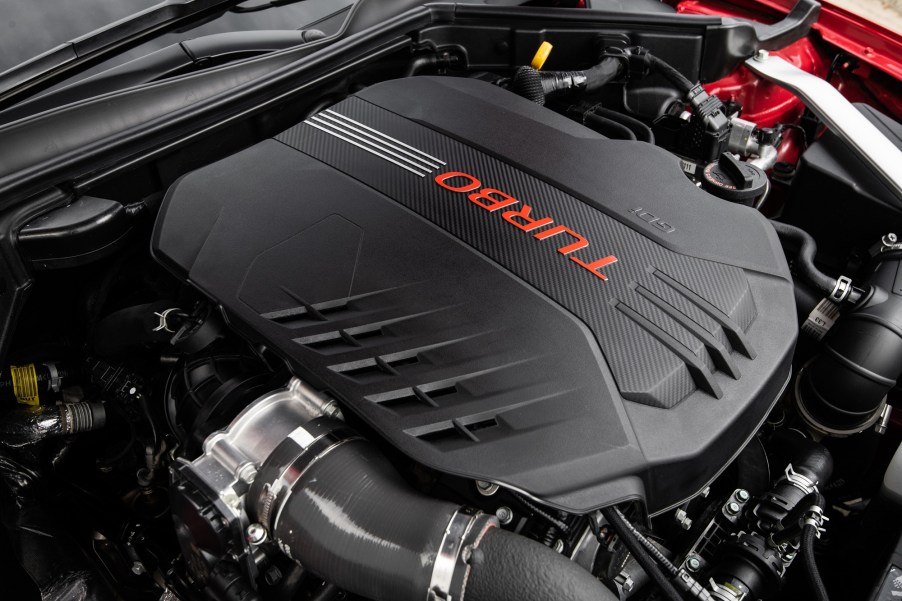
V6 vs. V8: Are Six Cylinders Enough?
In generations past, there was only one answer to the classic V6 vs. V8 debate: “there’s no replacement for displacement.” More recently, though, inline and V6 engines have been producing close to and, in some cases, as much as comparable V8s. Moreover, fewer cylinders have specific benefits, like lightness and affordability. So, are six cylinders enough, or should you stick with your V8?
Is a V6 better than a V8?
A V6 is not better than a V8; it’s different and offers different merits. Both engines are configured in a “V” shape, meaning the six-cylinder engine has two opposite rows of three cylinders, and an eight-cylinder has two rows of four cylinders. In inline applications, the cylinders are arranged in a straight row, and flat engines feature horizontally-oriented cylinders. However, the V configuration, wherein pistons attach to the crankshaft in the base of the V shape, is a popular choice for automakers.

Why pick six cylinders?
A V6 is better than a V8 in several facets. First, V6 applications are typically lighter than V8s, especially workhorse iron or steel engines. The weight savings often result in less front-heavy applications like front-engine V8 coupes, a good attribute for handling. Moreover, in many contexts, like the Pentastar V6 in the Dodge Challenger, a V6 is cheaper than a comparable eight-cylinder mill.
Better yet, forced induction, like turbocharging or supercharging, can bump a six-cylinder engine’s horsepower to V8 levels. For instance, the 368-horsepower Kia Stinger GT2 and 400-horsepower Nissan Z use twin-turbocharged V6 engines to keep up with V8-powered coupes like the S550 Ford Mustang GT.
Should you stick with a V8?
Even with the V6’s affordability, lightness, and power figures with forced induction, a V8 has merits over a six-cylinder mill. First, V8s tend to make significant power, even from a naturally aspirated engine. For instance, the 6.4L V8 in the Dodge Challenger R/T Scat Pack produces 485 horsepower without adding turbos or a supercharger. That high-displacement, naturally-aspirated layout is popular with hot rodders and builders because bolt-on modifications can take a V8 up to high horsepower numbers.
Of course, the best way to produce high horsepower in a V6 or V8 is with forced induction over cavernous displacement. Finally, and arguably, a V8 sounds better than a comparable V6. For instance, the 6.2L supercharged Hellcat V8 sings with a bassy rumble and a wild whine. A Hollywood sound expert told Donut Media that the supercharged Dodge V8 was one of the best sounds in the automotive landscape.

Is it better to tow with a V6 vs. a V8?
You might imagine that a V8 is much better suited for towing than a V6, and that’s mostly correct. However, a V6 with forced induction is often torquey enough to tow without a problem. For instance, Kelley Blue Book (KBB) says that a Ford F-150’s 5.0L V8 makes 410 lb-ft of torque. However, the F-150’s twin-turbocharged 3.5L V6 produces 500 lb-ft of torque and the same horsepower.
As a result, the V6-equipped F-150 has a 14,000-lb towing capacity compared to the V8’s 13,000. Scroll down to the following article to read more about engines like the Coyote V8!



